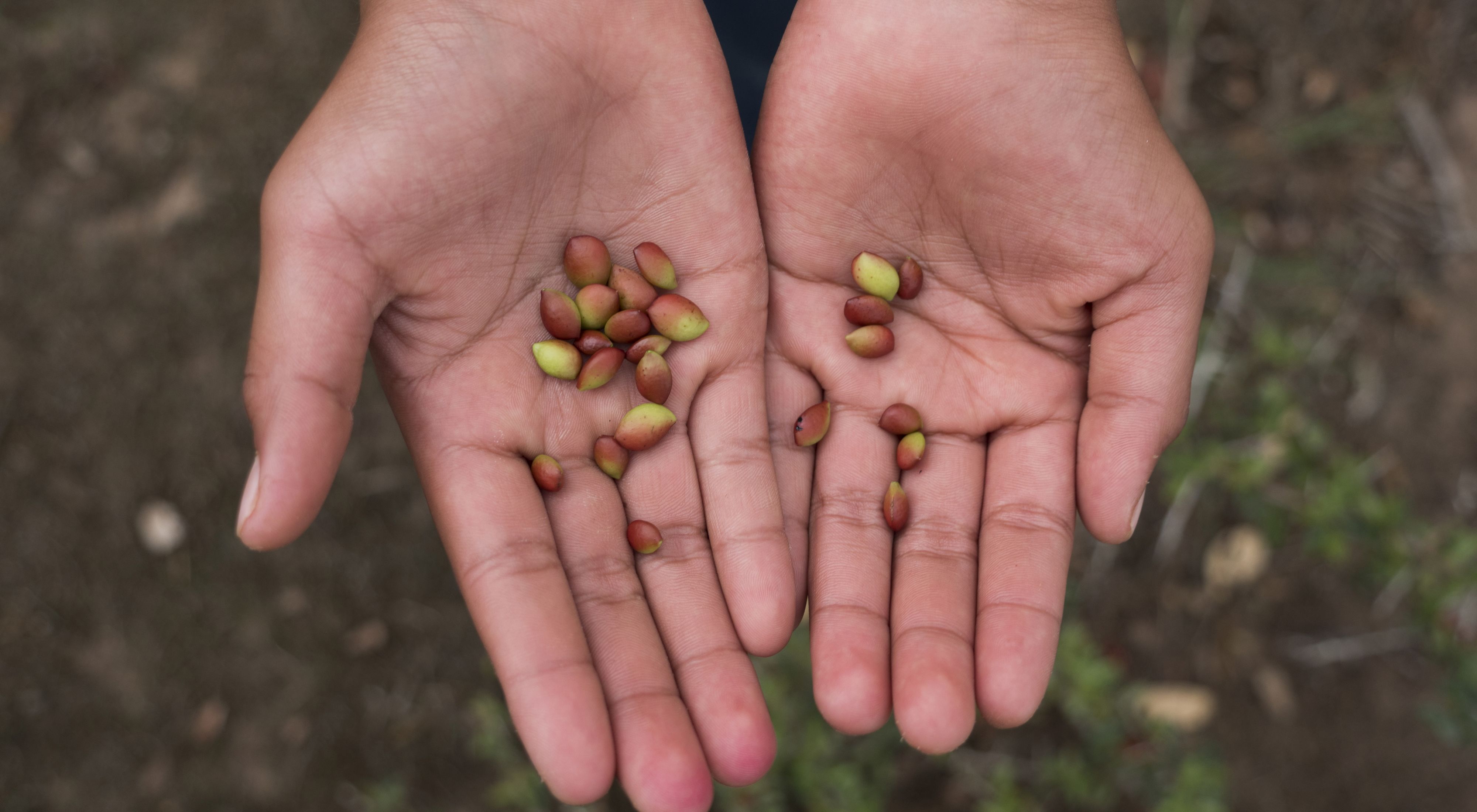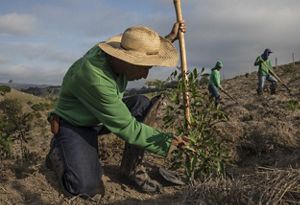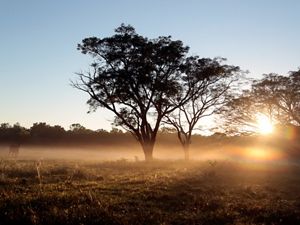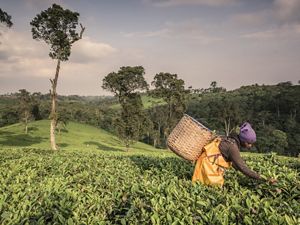Saving the Gran Chaco
One of the world’s last remaining biodiversity strongholds is dwindling fast - but local communities are finding solutions in nature.
By Manuel Torino, excerpted from La Nación
A thunderous roar precedes the cloud of hot dust that falls on Nueva Pompeya, leaving its residents petrified. It's not a volcano nearby erupting, but rather a truck spewing out orange earth as it moves at a funeral procession pace. Its load: huge quebracho and carob logs. Seconds later, silence returns to the heart of El Impenetrable in the Chaco.
Such scenes of overt deforestation are all too often repeated here and in many other parts of South America's Gran Chaco, an ecoregion spanning more than one million square kilometers—twice the size of Spain—stretching across Argentina, Bolivia, Paraguay and Brazil. This is one of the last remaining biodiversity strongholds in the world and is home to the second largest forest in Latin America after the Amazon. Yet, unlike its tropical cousin to the north, the Gran Chaco largely escapes the global radar. There is no international press coverage, no massive cause championed by Hollywood actors, nor is it the subject of some million-dollar environmental campaign.
This home to 3,400 species of plants, 900 species of animals, and more than four million people (nearly 10 percent of whom are Indigenous) has been silently suffering a steady loss of both natural and cultural wealth for more than a century, due to the uncontrolled sacking of its resources.

In recent decades, the unfettered felling of the forest has been compounded by the expansion of agricultural lands for cattle ranching and soybean farming. In fact, various environmental organizations estimate that 80 percent of Argentina's deforestation today is occurring in the Chaco region alone. Poaching, fires, and urban development add to the ever-growing list of threats.
However, not all is lost for this vast and enigmatic region. As the window of opportunity to tackle climate change narrows, the appetite for new approaches to sustainable development is growing worldwide—and local communities are demonstrating that the solution to the Gran Chaco’s environmental challenges may lie in nature itself, especially when it comes to food production.
“One of the biggest problems we face also holds the solution. The way we produce and consume food can help to protect and restore nature,” says Gustavo Marino, The Nature Conservancy’s (TNC) Regenerative Agriculture Coordinator in Argentina's Gran Chaco. He adds, “Chaco comes from the word chaku, which in an Indigenous language means ‘hunting grounds.’ All of us are looking for something in this land, but we have to do it with a new outlook, based on systemic transformation that integrates conservation with development.”
Nature-Based Solutions
As emphasized at the UN climate conference (COP26) in Glasgow, humanity is facing a triple challenge. For one thing, there is scientific consensus that we must keep global temperature rise below 1.5°C if we are to avoid a climate collapse and ensuing catastrophic consequences. But at the same time, we must find a sustainable way to supply healthy food to more than nine billion people by 2050. And along the way, we desperately need to turn the tide on rising biodiversity loss.
Solving this dilemma, arguably the most pressing today, requires bringing together some of the world's brightest minds. While there’s value in innovative tech solutions…simply working with nature could provide one-third of the emissions reductions we need by 2030, in addition to co-benefits for food production and biodiversity.
That is precisely what is happening in the Gran Chaco. Confronted with deteriorating soil quality, depleted by successive harvests and excessive use of synthetic fertilizers, local producers are returning to a form of sustainable agriculture that was used by Indigenous communities more than a century ago. This practice of regenerative agriculture is based on restoring to nature the essential resources it needs to continue producing year after year.
“Regenerative agriculture is a conservation and restoration-based approach in farming systems that prioritizes soil health, increased biodiversity, improvements to the water cycle, and carbon sequestration from the atmosphere, which in turn increases climate resilience and promotes sustainable livelihoods,” explains Marino. For instance, soybean farmers are planting rows of small native plants between their crops. These are species that will not be harvested or generate immediate income, but they infuse minerals into the soil that prevent erosion and boost overall productivity.


Regenerating the Gran Chaco
See how regenerative food systems offer hopeThe same is true for cattle ranching, the most widespread activity in the region. With guidance from National Agricultural Technology Institute technicians, small ranchers now let their cows graze in the forests instead of clearing land for pasture. As a result, their cattle eat better, have shade from the Chaco's scorching heat and, in return, fertilize the ecosystem and contribute to the spread of carob seeds, all of which keeps the forest healthy by creating a virtuous circle in what TNC experts call “foodscapes.” This regenerative model best suited for small and medium-sized cattle ranches, though large agricultural and livestock companies may be able to adapt similar practices to improve their environmental efficiency in the future.
Meanwhile, the sector is beginning to embrace another trend: traceability—that is, the ability to track where, how, and by whom a given foodstuff was produced. Countries may sooner than later begin mandating certificates for sustainably harvested grains. Alternatively, consumers may opt to buy “deforestation-free” meat. Alex Ehrenhaus, manager of Solidaridad, another global organization working on developing sustainable and inclusive markets sees it this way: “Traceability is a very powerful tool for ensuring that a product conforms to a number of social and environmental sustainability requirements. In Europe and the United States, it is already a reality, and consumers are demanding sustainable products. Such certifications also exist for agricultural commodities, although in the case of soybeans, for example, only 3 percent of the total amount being sold worldwide has been certified.”
Gran Chaco by the Numbers
-
1M+
Region covers more than 1 million square kilometers in Argentina, Paraguay, Bolivia, and Brazil.
-
2nd
Second largest forest in South America after the Amazon.
-
60%
60% of the ecoregion is located in Argentina.
-
8M
Eight million hectares of Argentine Gran Chaco forest have disappeared over the last thirty years.
Despite the fact that large-scale deforestation has decreased in El Impenetrable in the last decade—particularly since a forestry law was enacted— small-scale deforestation continues to spread outside the boundaries of the Impenetrable National Park. This protected area was created in 2014 to preserve some 130,000 hectares of almost virgin forest with emblematic species such as the red and white quebracho, palo borracho, palo santo, mistol, chañar, and several types of carob trees.
Nearly 8 million hectares have been lost in the Gran Chaco region in the last thirty years. That is about 400 times the size of the city of Buenos Aires, the Argentine capital. “In terms of infrastructure, timber from the Chaco historically, for Argentina, represented something akin to what steel did for other countries. Railroad ties, old road bridges, pilings in port, everything was built with the hardwood of trees such as carob or quebracho. We owe a great debt to Gran Chaco. We have to give back everything it gave us,” Marino says.


What’s more, this globally rare dry forest plays a key role in the fight against climate change. Recent research found that the carbon stored here is 19 times greater than previously estimated, [AG1] making it one of the largest carbon sinks on the planet. Healthy forests also reduce the impact of floods during torrential summer rains, and help provide much of the water that flows through Argentina’s La Plata Basin, which services much of the population and its industries.
Beyond degrading the soil, turning fertile pastures and lush forests into almost desert-like lands, unchecked development in the Gran Chaco is also hastening cultural erosion—a phenomenon characterized by the loss of local values and knowledge, as community members move away in search of a better future due to the lack of opportunities in their homelands.
Quote
This globally rare dry forest plays a key role in the fight against climate change. Recent research found that the carbon stored here is 19 times greater than previously estimated.
“The giant sucking sound represents a hollowing out of knowledge, skills, and essential resources, as well as a loss of local identity. Nowadays, in the Chaco, there are places where, for example, nobody can find people to hire as nature guides, cooks, craftsmen, or for field work to develop tourism or cattle raising, because these places have undergone a severe cultural erosion,” says Marino.
And so, in a region where almost 600 Indigenous communities made up of more than 20 ethnic groups coexist, a great deal of effort is being put into not only restoring nature, but also the region's intangible and centuries-old heritage.
An excerpt of the original piece in La Nación by Manuel Torino
November 12, 2021
View Original
Global Insights
Check out our latest thinking and real-world solutions to some of the most complex challenges facing people and the planet today.




